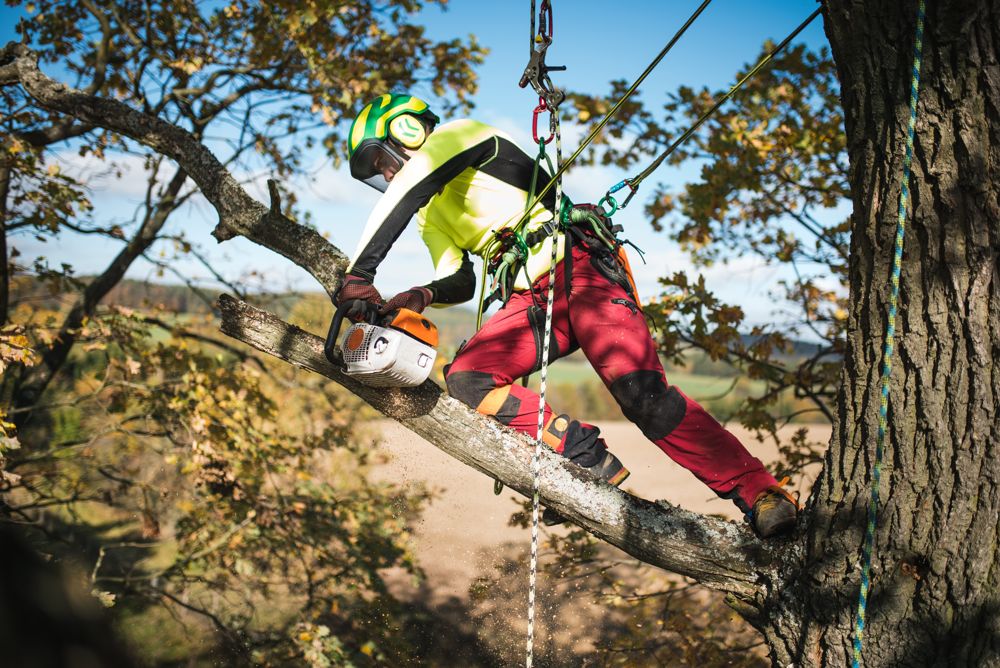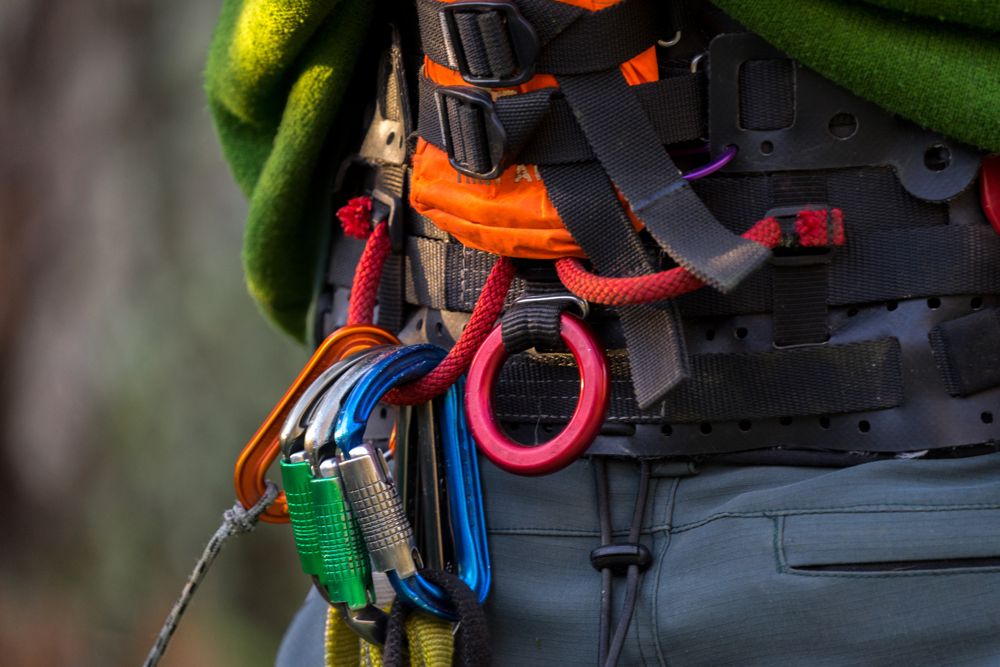Do you love trees that much? If that’s the case, you might want to consider becoming a full-time arborist. However, it can be a costly process.
But before you start climbing up a tree, you’ll need to get equipped with a wide range of arborist-specific tools and equipment. And with tons of tree climbing gear in the market, knowing where to begin can be quite a challenge.
But don’t stress yourself out. This article has got you covered. In this post, you’ll discover all the essential tools and equipment an arborist should have for safe tree climbing work experience.
Furthermore, when purchasing tree climbing gear, it’s essential to buy only from a well-known, tried-and-tested, and trusted brand. Doing so will help prevent falling from trees, which may lead to severe physical injuries, permanent disability, or even death.

Personal Protective Equipment
When it comes to being an arborist, the first thing you need to consider is your safety. After all, slicing down a tree can be extremely dangerous. That’s why it’s important to have a complete set of arborist-specific personal protective equipment (PPE).
PPE is an absolute necessity in arboriculture and should be the first thing on your shopping list. Otherwise, you’ll put your life in grave danger, especially when climbing the tallest trees.
In addition, an arborist-specific PPE is different from the gear you would use on a construction site. Each tool has to qualify for specific health and safety standards before it is deemed suitable for tree operations.

For example, the majority of work performed by most arborists requires the use of chainsaws. However, wearing regular safety boots and waterproof trousers is not enough. Using chainsaws requires specific attire to address the hazards they present.
Here are the minimum PPE requirements that you’ll need before you head on to your tree:
- Safety Helmet
A safety helmet protects your head from falling objects. It should be a mountaineering style helmet with a four-point chin strap. Also, it should fit perfectly with the chosen hearing and vision protection.
- Eye Protection
It’s crucial when working with chainsaws. It shields your eyes from wooden fragments and debris caused by running a chainsaw against any wood. In addition, it offers better impact resistance and unobstructed vision with its wire mesh that prevents and eliminates the chances of fogging.
- Hearing Protection
It’s another crucial gear when working with chainsaws. It shields your ears from the loud sound they produce. When purchasing hearing protection, ensure to check its noise reduction rate (NRR). It indicates the level of sound (in decibels) gear can block. So, the higher the rate, the better.
- Chainsaw Boots
It protects your feet from a running chainsaw with its steel safety toe support. Aside from chainsaw protection, excellent arborist boots should also keep you focused and comfortable while working.
- Leg Protection
This gear helps protect your legs and groin from chainsaw injury and potential debris. It should be cut-resistant, water-repellant, and dirt-repellant. Also, chainsaw trousers are classified using four levels of protection: class zero, one, two, and three. The higher the class, the more protective trousers are.
- Class zero for a chainsaw with a speed of 16 m/s
- Class one for a chainsaw with a speed of 20 m/s
- Class two for a chainsaw with a speed of 24 m/s
- Class three for a chainsaw with a speed of 28 m/s
Among these levels of protection, class three chainsaw trousers provide the best protection against chainsaws.
- Gloves
Gloves protect your hands from sharp and pointed objects, machines, and extreme cold. They could be made of nitrile, latex, leather, and cowhide. Leather provides the best combination of grip, dexterity, and protection, but it’s also the most expensive among other materials.
Harness
A harness is one of the top safety gears an arborist uses in daily tree work. Its main function is to keep you tied and secured when climbing a tree to avoid falling directly to the ground. Therefore, it’s crucial to get it right.
Also, a rock-climbing harness may not be enough, so you need one that is specifically developed for tree climbing. If that’s the case, choose the one with a low central attachment point. And it should include D-side rings where you can attach your flip lines.
Other things to look for may include:
- Quick-release buckles
- Cushioned waist belt
- Suspension seat
Rope
A rope is often considered the lifeblood of tree climbing by many arborists. Without it, you won’t be able to climb up and go down safely. Also, your harness will be of no use at all.
However, you have to pay attention when choosing a rope. Like any tree climbing gear, you need to look for a rope that is specifically designed for tree climbing. Even the rope used for rock climbing may not be enough.
It should be abrasion and UV resistant, rigid, and low-stretch. Also, it’s usually made of synthetic fibers, such as nylon, polyethylene, polyester, and polypropylene.
Karabiners
Karabiners are strong metal clips and connectors that connect all gears and equipment, forming a functional safety system. In addition, they’ll keep you secure to ropes so you can effectively perform your tree climbing tasks.
For tree climbing purposes, karabiners should have a triple-action locking mechanism and a strength rating of as low as 23kN. Also, don’t forget to bring at least four karabiners with different shapes to find out which will suit your style.
Most arborists may prefer alloy karabiners because they’re lighter compared to steel, perfect for essential rigging operations.
Final Words
Becoming an arborist is no easy task, considering the wide range of hazards it presents, from working with chainsaws to climbing a tree. That being said, it’s necessary to prioritize your safety and equip yourself with essential gear to help you stay away from harm.
With all these suggestions in mind, it’s still important to conduct additional research before buying, such as consulting your training provider or other professional and experienced arborists.
Also, don’t forget to consider where you’ll get them. As much as possible, only buy from a reliable supplier since your life depends on the quality of the material you’ll be using.